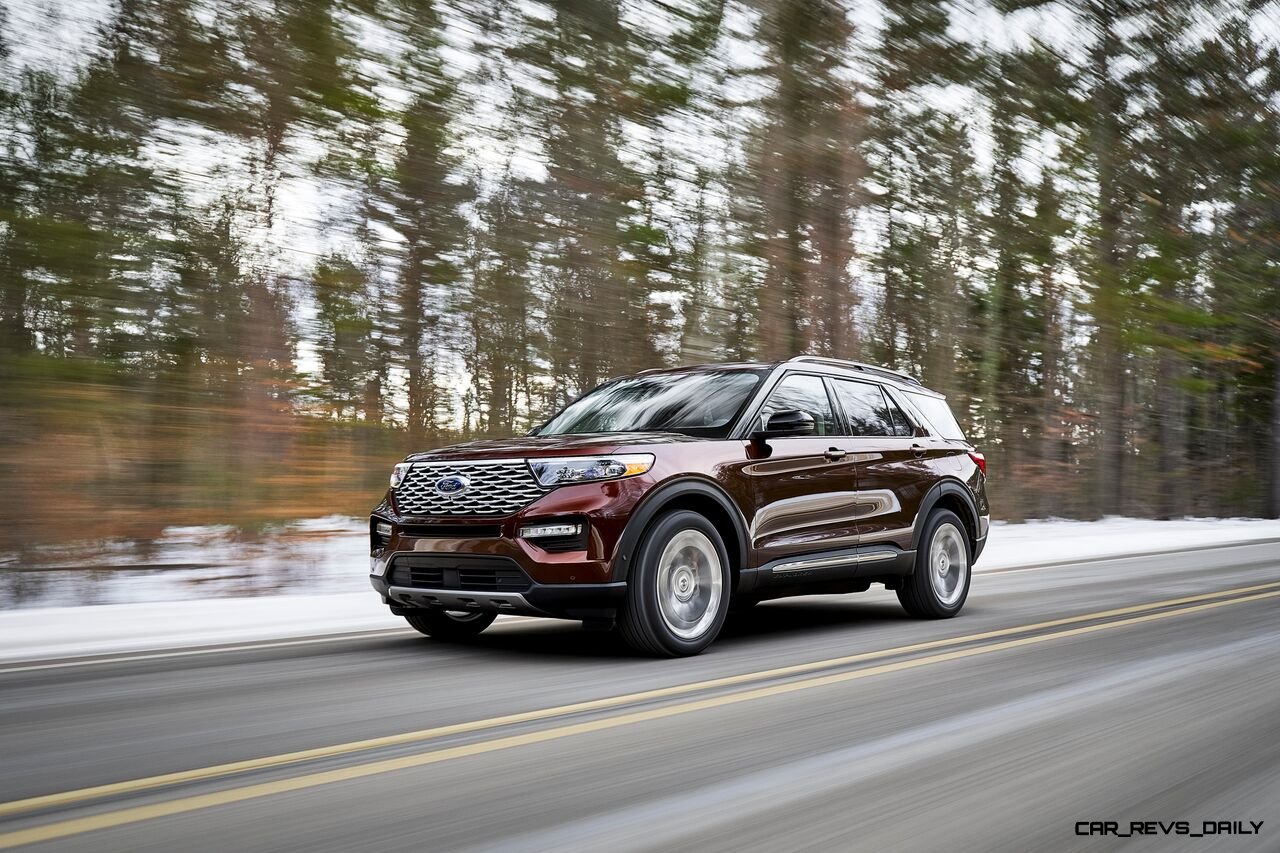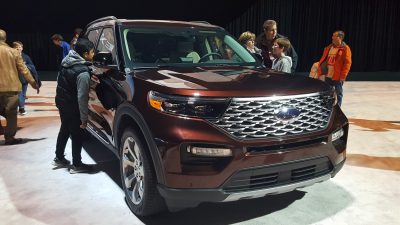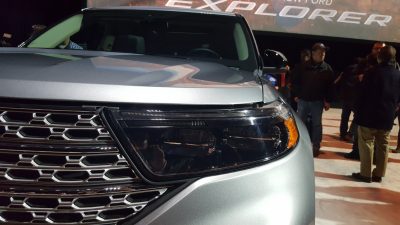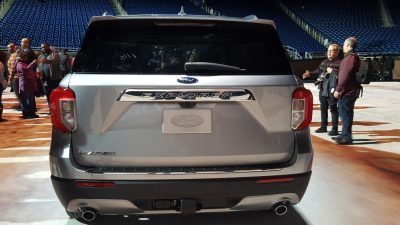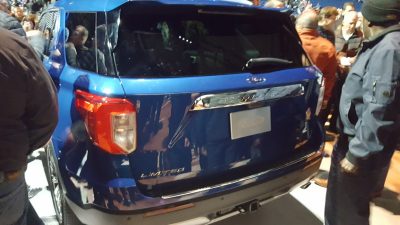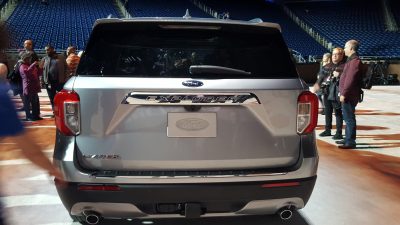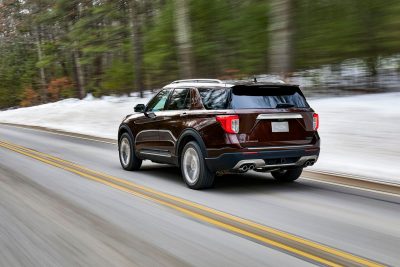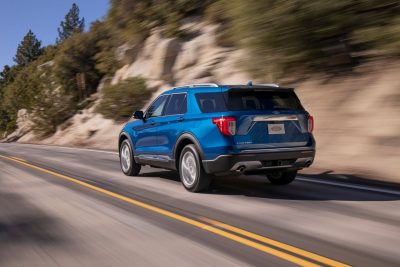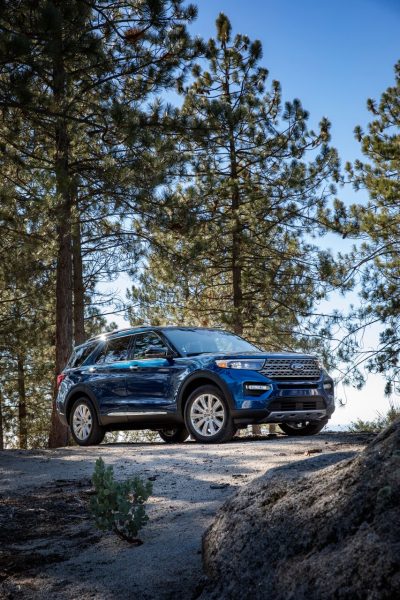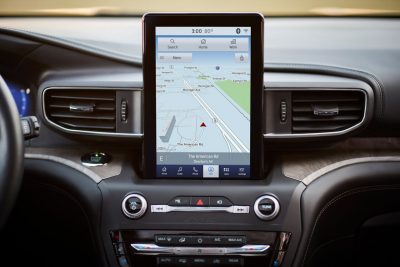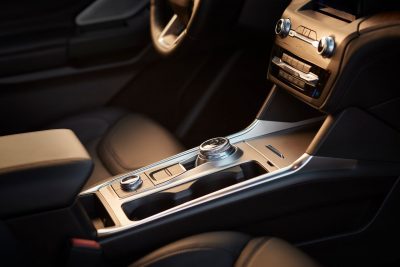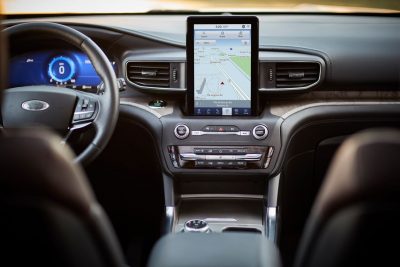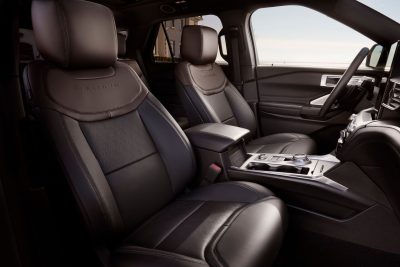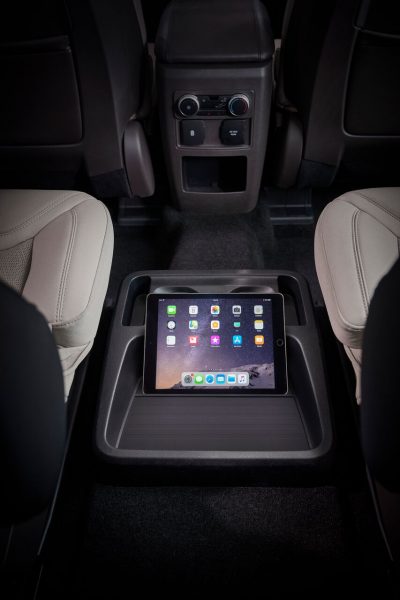Ford has alot riding on the chiseled shoulders of the 2020 Ford Explorer. With the company’s recent all in bet on utility vehicles being the future, as well as its rapidly evolving views on mobility tech, the Explorer has to cater to a wider swath of customers. Based on our first look at the 2020 Ford Explorer during its unveiling at Ford Field, it appears that Ford has a winner on its hands.
The exterior styling of the 2020 Ford Explorer has alot of similarities with the current generation Explorer, and that is completely intentional. The Explorer is one of the best selling models in Ford’s utility lineup, and the last thing the company wanted tp do was to stray too far from the proven design that customers have come to love. The front fascia is the most ambitious update here, with an all new grille and headlights adding a distinctively athletic tone to the Explorer’s visual presentation along with its exaggerated fenders. The side profile is more modest, and leads out to lightly tweaked tail lights that largely resemble the current units. While this is not the all out redesign that some Explorer fans wanted, we cannot fault Ford for sticking with a familiar formula that still clicks with the bulk of their customer base. In our view, the design looks great in person, and pictures alone cannot do it justice. When compared with rivals, the 2020 Explorer certainly has a leg up over the bulk of the competition, with only the Dodge Durango slightly outdoing it in outright brutalism.
The interior of the 2020 Explorer is arguably the biggest change that Explorer faithful will see when they set foot inside the new model. Higher grade plastics and materials are abundant throughout this iteration of Explorer, and while locked doors on the Explorers we encountered prevented detailed examination this time around, Ford did reveal a swath of information about what customers can expect when they nestle in behind the wheel. For instance, an advanced 10.1 inch portrait style touchscreen is standard in higher trim levels, and a 12 inch screen in the instrument panel is also available. The 2020 Explorer will be one of the first vehicles on the market to use Amazon’s Alexa technology for certain aspects of the infotainment system’s operation. Part of a suite of updates for Ford’s SYNC 3 system, drivers can use Alexa to find restaurants, bring up driving directions, and even play audio books. Ford revealed that some aspects of the system are still being beta tested by Ford’s employees, but look for Alexa to fully roll out in the near future, with the Ford Explorer and the smaller Edge being the two spearhead models in this particular rollout.
Back to the Explorer, the rest of the interior is an interesting display of design. For example, the dashboard is low and wide, with Ford designers opting for a stepped shape. Platinum models get attractive natural looking wood trim on the top of this step, and in this particular guise the way the wood accents are positioned does allow them to look slightly more attractive than the wood accents that adorn the current generation platinum. The various buttons and knobs for the climate control system are clustered together, and it appears that Ford engineers attempted to bring more ergonomics and user friendliness to the control layout. Ford also claims that the Explorer is more spacious than before, with the extra 6-inches of wheelbase playing a key part in this increase. When we asked Ford reps about how the company would explain the rear-wheel drive layout to a customer used to front-wheel drive, they used this explanation as part of their response, citing the use of a longitudinal engine and transmission layout as well as better packaging to help minimize the space intrusion, and actually increase space and roominess for occupants and cargo.
Performance hardware for the 2020 Explorer makes full use of the rear-wheel drive layout, with a pair of engines powering those wheels for the new model year. XLT and Limited models come equipped with a 2.3 liter turbocharged four cylinder engine, which is similar to the one found in the Mustang and Ranger. The engine also shares its DNA with the current Explorer’s 2.3 liter, but tweaks and revisions allow the motor to produce a solid 300 horsepower, and an equally robust 310 lb-ft of torque. Platinum models up the ante dramatically, and will arrive with a twin-turbocharged 3.0 liter V6 that makes 365 horsepower and 380 lb-ft of torque. Ford chose to keep engine specs for both the ST and the Hybrid variants close to the vest this time around, but look for those items to be formally revealed next week at the North American International Auto Show. All Explorers will feature a 10-speed automatic transmission, which was co-developed with arch-rival GM, and has had prior performances in the Ford Mustang, Lincoln Navigator as well as the Ford F-150 Raptor off-roader.
The switch to its new platform (shared with the Lincoln Aviator) had other benefits as well. Ford claims that the 2020 Explorer is quicker than before, and this is partially due to the 200 lbs that it lost through an increased use of aluminum in a lot of its structure. Unlike the Expedition, the bulk of the body panels are steel, but aluminum is used in the hood, bumper beams, strut towers, and other key areas. The remaining 25 percent of the structure is made from high strength steel which is only used in critical areas. New Explorers can tow more than before too, with the V6 model adding 600 pounds for a total of 5,600 pounds, and the four cylinder tacking on 300 pounds extra for a revised total of 5,300. These figures are slightly higher than many of its rivals, which tend to boast tow ratings that are just below 5,000 pounds.
Look for the 2020 Ford Explorer to make its official appearance next week at the North American International Auto Show in Detroit, with sales expected to begin this summer. Pricing information was not released, but look for that particular bit of information as well as the final fuel economy estimates to be revealed closer to the Explorer’s official on-sale date.

Carl Malek has been an automotive journalist for over 10 years. First starting out as a freelance photographer before making the transition to writing during college, his work has appeared on numerous automotive forums as well as websites such as Autoshopper.com.
Carl is also a big fan of British vehicles with the bulk of his devotion going to the Morgan Motor Company as well as offerings from Lotus, MG, and Caterham. When he is not writing about automobiles, Carl enjoys spending time with his family and friends in the Metro Detroit area, as well as spending time with his adorable pets.

